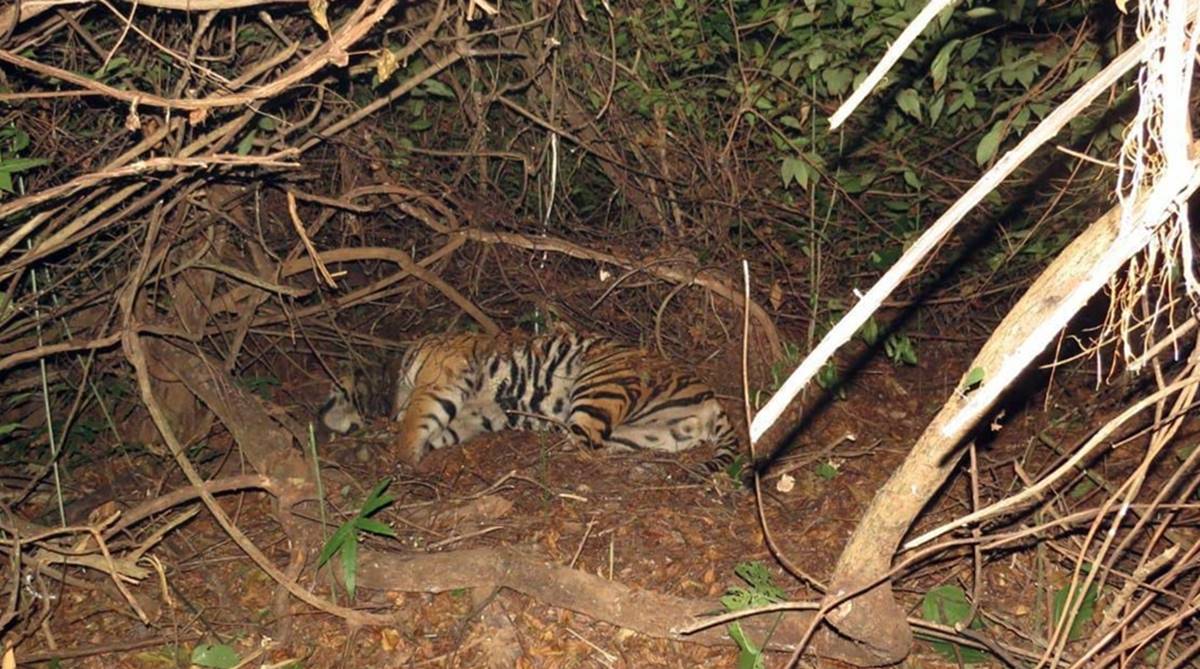ZSI envisages restoration of coral reefs
ZSI is not only monitoring these but has successfully trans-located corals from the Gulf of Mannar and has been able to relocate them to the Gulf of Kutch.
This has happened twice before in Sunderbans and in Panna, according to reports
Statesman News Service | Bhubaneswar | November 17, 2018 10:33 am

The tiger had been brought to Satkosia Tiger Reserve from MP on 21 June. (Photo: IANS)
The radio collar around the neck of the Royal Bengal tiger translocated from Kanha in Madhya Pradesh to Satkosia in Odisha could have caused a wound in the animal over the last five months and led to its death due to maggot infection, said reliable sources, while adding that the postmortem report may reveal the cause of the wound. The Odisha tiger would not be the first to die like this, as the sources said this had happened twice before at Sunderbans and Panna.
The sources, however, added the National Tiger Conservation Authority (NTCA) might not accept this version since the radio collar had been put by them. Nothing could be ruled out at this juncture, they said, adding that the wound was certainly not due to a poaching attempt, but could have been caused by a wild boar attack, attack by the tigress or even due to the radio collar.
Advertisement
According to preliminary findings, the tiger had a five-day-old deep wound and had developed maggot infection near the dorsal neck region.
Advertisement
The postmortem and examination of the camera recordings will help arrive at a firm conclusion, added tiger experts. A team of the NTCA and the Wildlife Institute of India (WII), Amit Mallick and K Ramesh, arrived at Satkosia on Friday to conduct a probe into the death of the male tiger that had been translocated from Madhya Pradesh.
READ | Kanha tiger translocated to Odisha’s Satkosia reserve in June is dead
The Kanha tiger had been released in the Satkosia tiger reserve five months ago but was found dead on 14 November with a wound near the neck.
The NTCA and the WII had approved the tiger relocation project in which six tigers were to be released to Satkosia in the first such experiment in the country. Of the six, two had been released. While the male had settled and even mated, the tigress killed one person and had to be transquilised.
Principal Chief Conservator of Forests (wildlife) Sandeep Tripathy, who had been to the spot, said a maggot-infected wound, about six to eight days old, was spotted on the left side of the tiger’s neck.
READ | Odisha tiger translocation project suspended after Kanha tiger’s death in Satkosia
“We are waiting for a detailed post mortem report, but the initial investigation suggests that the infection on the RBT’s neck could have led to its death,” he said.
Earlier this month, the other translocated tiger, ‘Sundari’, was also tranquilised and shifted to an enclosure, after the local people alleged that it had mauled two persons to death. Mallick and Ramesh accompanied by DFO of Satkosia Ramaswamy went to the spot where the tiger had died. The NTCA and WII team also had a look at the tigress which is in a special enclosure at Raiguda.
Advertisement
ZSI is not only monitoring these but has successfully trans-located corals from the Gulf of Mannar and has been able to relocate them to the Gulf of Kutch.
Yadav said the Forest department is planning to put satellite radio collars on three more tigers in Sunderbans.
Satkosia, which is home to two tigers despite its rich tiger-friendly prey base and ecosystem, has hogged the spotlight for carrying out the country's first tiger translocation programme.
Advertisement
